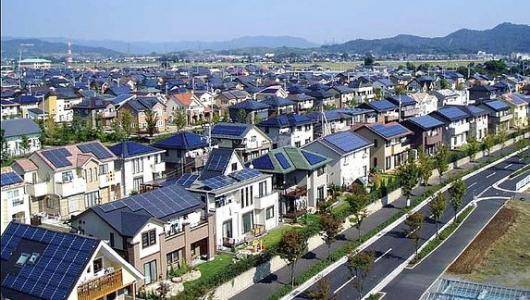SUBSCRIBE to
Local Clean Energy
News & Alerts
Public Banks Power Local Renewables
 Approximately 20 percent of banks around the world are public, meaning they are controlled by a government body instead of private investors. Unlike most banks in the U.S., public banks are managed to support local lending within their jurisdiction and invest within the community to maximize local public good. Instead of being driven by short-term profits to shareholders, decisions regarding public banks are generally in the interest of the public. Profits generated by public banks, which comes mostly from the interest paid on loans, are utilized to lower interest rates and make banking accessible to a broad spectrum of customers in the community across various income levels and social standings. In Germany, public banks have been largely responsible for the tremendous growth of local, clean energy resources.
Approximately 20 percent of banks around the world are public, meaning they are controlled by a government body instead of private investors. Unlike most banks in the U.S., public banks are managed to support local lending within their jurisdiction and invest within the community to maximize local public good. Instead of being driven by short-term profits to shareholders, decisions regarding public banks are generally in the interest of the public. Profits generated by public banks, which comes mostly from the interest paid on loans, are utilized to lower interest rates and make banking accessible to a broad spectrum of customers in the community across various income levels and social standings. In Germany, public banks have been largely responsible for the tremendous growth of local, clean energy resources.
On September 25, 2017, the Local Clean Energy Alliance teamed up with the Friends of the Public Bank of Oakland to host Wolfram Morales, Chief Economist at the East-German Savings Bank Association, Sparkasse, for a community forum at Oakland’s City Hall. The presentation detailed the connection between the benefits of a transparent, local banking system and the ability to procure democratically-controlled clean energy.
Morales was joined by Nicolas Chaset, CEO of East Bay Community Energy, Alameda County’s newly formed Community Choice energy program. Also on the panel were Jessica Tovar of the Local Clean Energy Alliance and Gregory Rosen of High Noon Advisors. The discussion focused on the success of public banks in Germany in renewable energy development and how such a system could contribute to East Bay communities.
In Germany, the power bestowed upon local communities through public banking has allowed for considerable investment in renewable energy. Through affordable loans for energy efficient housing, energy efficiency and renewable energy development, Mr. Morales reported that public banks have contributed 10.3 billion Euros (12.3 billion US Dollars) toward clean energy development in Germany, or around 73% of total investments in renewable energy in that country. Germany is now a world leader in clean energy and its diversion from fossil fuels would not have been possible without the contributions of forward-thinking citizens via the effective lending of public banks.
Potential Benefits to East Bay Community Energy
The Local Clean Energy Alliance believes not only in the procurement of clean, renewable energy, but also in the empowerment of local communities through community-controlled energy resources and transparent decision-making. The imperative transition from fossil fuels to renewable sources offers a unique opportunity to not only divest from dirty energy generation, but to overhaul the entire system by which energy is procured in the East Bay and around the country. Low interest rate loans, made possible by public banks, could play a big role in the viability of local, renewable infrastructure.
Community Choice energy programs, like East Bay Community Energy, which will serve Alameda County, are public, not-for profit electrical service agencies that act as alternatives to the monopoly utilities like PG&E. They are another important piece in reforming the system of power production in this country.
The biggest challenge to the widespread success of Community Choice Energy is the power currently held by massive energy corporations, like PG&E. Not only do such corporations control a system that mostly benefits private investors and that has been in place for over one hundred years, but they often have political connections and use them to spread misinformation and stamp out competition. As described by Ms. Tovar, “When we pay PG&E for our electricity, that money is out the door into the investors. When you pay into an East Bay community energy program, you’re paying into a local county-wide program and so that money circulates locally. We want to see that wealth continue in our community.” Public banks would diminish the control of large corporations by preserving community resources so that they can be utilized by those living within the bank’s jurisdiction. In Germany, citizens have seen the local benefit of publicly-controlled energy working in combination with public banks.
Public bank lending for community benefit can boost local clean energy development as shown by the massive growth of local renewable resources in Germany. That success has inspired advocacy for a local public bank, led by Friends of the Public Bank of Oakland. On October 19, Oakland City Council approved a feasibility study for a local public bank. If such a study results in the establishment of a public bank, East Bay communities would be able to utilize the bank for public projects such as renewable energy development. “The only reason why our East Bay Community Energy program is so unique is because of the active participation of the community… all of these different sectors that want to see clean energy actualized in our communities,” Ms. Tovar said. Through the transfer of power from private banks to local governments via public banking, East Bay citizens could manage fair and democratic control of their resources and energy procurement to maximize benefits within their own neighborhoods.
